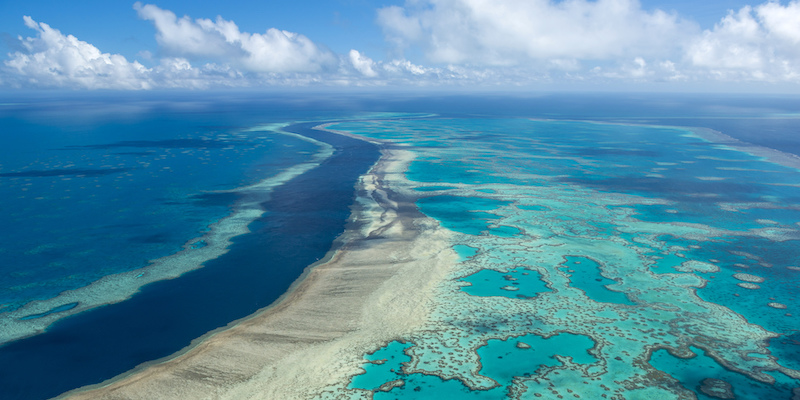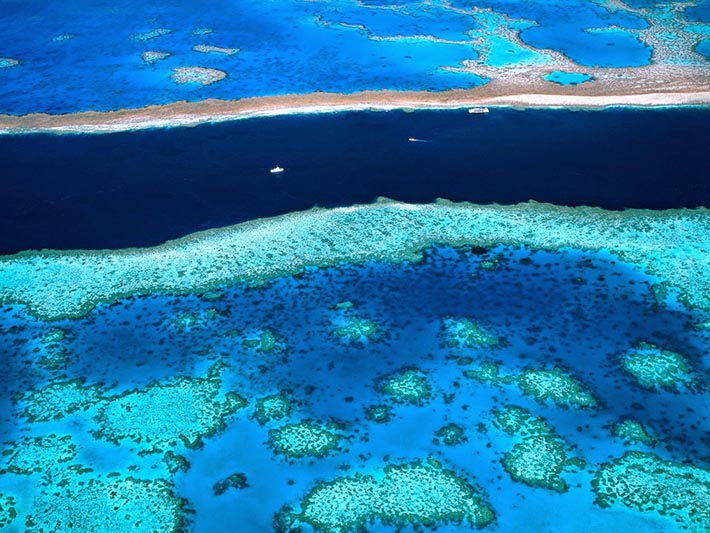The Great Barrier Reef, a UNESCO World Heritage Site and one of the largest and most diverse marine ecosystems on the planet, is the focus of careful observation by scientists. Second the latest annual report ofAustralian Institute of Marine Science (AIMS), the Reef has shown signs of resilience in the face of numerous threats, including coral bleaching events and attacks by the crown-of-thorns starfish. However, despite these positive signs, the situation remains complex and requires in-depth analysis.
Resist, resist, resist
The Great Barrier Reef remains in a precarious situation, but this year has shown great resilience. The annual update of the long-term monitoring ofAIMS observed a decline less than 1% in the overall hard coral cover.
While coral cover remains above historic lows over the past decade and continues to improve in several individual reefs, more significant coral loss in others has contributed to the small overall decline of the Great Barrier Reef.
Last year's mass bleaching event, the first observed in a La Niña year since the survey began 37 years ago, also contributed to coral deaths. In particular, the phenomenon was acute in the northern and central regions of the Great Barrier Reef.
The challenges continue
Scientists fromAIMS found that although the 2022 bleaching was less damaging than past events, its impact, combined with those of the crown-of-thorns star and the climate changes, has contributed to the slight decline of stony corals across the Great Barrier Reef.
Approximately 82% of individual reefs had stony coral cover between 10% and 50%. A further 16% had coverage above 50%. Despite this, theAIMS he warned that most of the recent recovery has been driven by fast-growing Acropora shield corals. These are particularly susceptible to cyclones, bleaching and crown-of-thorns starfish.

Optimism, but with reservations
In a statement, the Reef Government Authority described similar coral cover reports to 2022 as “good news for the Reef”. The Dr. Roger Beeden, Acting Chief Scientist, said: “While these local pressures have meant that average stony coral cover has stabilised, it also demonstrates that in the absence of disturbance, reefs continue to recover.”
However, Dr. Mike Emslie, a coral reef ecologist and leader of the long-term monitoring program, points out that the 2022 bleaching event did not cause widespread mortality. And that the Great Barrier Reef “is still under threat of impacts that can rapidly reverse improvements in a short time.”
Great Barrier Reef, word to the experts
Marine biologist Dr. Emma Camp leads the Future Reefs program at UTS. He cautions that while the reef's resilience is encouraging, the long-term monitoring program provides only a general overview of the reef's health.
Emslie points out that the reef's strength will be further tested by the long-term impacts of climate-driven perturbations. For this he underlines the need to reduce greenhouse gas emissions that increase global temperatures.
Great Barrier Reef, an uncertain but hopeful future
The Great Barrier Reef remains a beautiful and vibrant place. Has the ability and resilience to recover from disruptions. However, we must also temper this optimism with the realization that we are seeing an increase in the frequency of these disruptions, which is reducing the time available for recovery.


